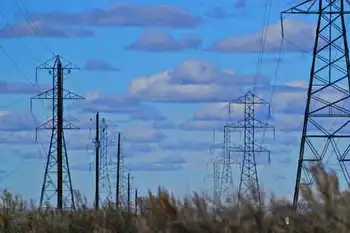Utility Service, Meters In Legislative Spotlight
Members of the legislature's energy committee wanted answers about how many CL&P customers had received bills based on inaccurate meter readings and why the utility didn't promptly address complaints and refused requests to test the meters.
Legislators also wanted to know why state regulators or other officials didn't pick up on what some described as a systematic problem with CL&P's customer service. "I think there is a crisis in confidence," said state Rep. Tom Kehoe, D-Glastonbury.
CL&P officials were contrite during a five-hour hearing at the Legislative Office Building in Hartford. Raymond Necci, the utility's president, told legislators the company made mistakes in how it handled service for some customers.
Instead of listening to concerns about the accuracy of its electric meters, CL&P service representatives refused to acknowledge the possibility that its meters could be at fault, Necci said. "Let me be clear that we have made mistakes," he said. "For that we apologize."
The hearing followed a series of columns by George Gombossy, The Courant's Watchdog columnist. The columns told of complaints by several CL&P customers about the company's service, including refusal by some service representatives to check the meters of those who believed they were being overcharged. Regulators from the state Department of Public Utility Control testified that of the 1.2 million CL&P meters, an estimated 2,400 could be inaccurate.
That means the utility could either be overcharging or undercharging those customers for electricity, DPUC officials said. Donald Downes, the DPUC chairman, emphasized that the number of inaccurate meters is probably less than two-tenths of 1 percent of all meters. The amount could be expected for several reasons, including manufacturing defects, lightning strikes and other things that can cause meter malfunctions.
But some legislators said that although the number may be a small percentage of all meters, the problems still mean that thousands of Connecticut residents may be receiving inaccurate energy bills.
"It really stinks when you're the half percent, and you're being taken to the cleaners," said state Rep. Russ Morin, D-Wethersfield. CL&P said it has tested more than 16,000 meters so far this year and found that 28 had malfunctions that resulted in overbilling. Seven of those meters were identified through meter tests requested by customers.
Necci told legislators that the utility has instituted a new policy making it easier for customers to get their meters tested and is responding promptly to hundreds of customer requests. Legislators and regulators agreed that the larger issue is not meters - some percentage will always be inaccurate - but how CL&P, a regulated utility, responded to its customers.
There are no choices about which company will deliver electricity. CL&P said it has taken several steps beyond responding to hundreds of requests for meter tests. It is opening a customer service center where people can walk in and talk with a CL&P representative.
The company has also created a "customer care team" to see complaints through to resolution. And a customer relations firm, Texas-based Chip Bell Group, is reviewing CL&P's customer service operations.
"It is so important to regain the customer's confidence," Necci said. "First in the company - that the company listens and responds - and second (in) the meter."
But Attorney General Richard Blumenthal and some legislators questioned whether CL&P is doing enough.
They discussed at the hearing whether new customer service standards and additional reporting requirements are needed. Blumenthal said he is currently investigating more than 100 complaints about CL&P's customer service and the DPUC is holding its own review of customer service and meter technology.
Legislators also discussed changing the way customers file complaints against utilities. They pointed out that the current system has no central reporting agency, with consumers contacting the DPUC, attorney general's office, the state 211 infoline and other agencies with utility questions and complaints.
The DPUC is expected to conclude its review in December and the legislature could address the customer service issue during the next session early next year. State Consumer Counsel Mary J. Healey said her office plans to make sure that the expense of improving customer service is not passed on to ratepayers and instead comes out of CL&P's earnings.
Related News

The German economy used to be the envy of the world. What happened?
BERLIN - Germany went from envy of the world to the worst-performing major developed economy. What happened?
For most of this century, Germany racked up one economic success after another, dominating global markets for high-end products like luxury cars and industrial machinery, selling so much to the rest of the world that half the economy ran on exports.
Jobs were plentiful, the government’s financial coffers grew as other European countries drowned in debt, and books were written about what other countries could learn from Germany.
No longer. Now, Germany is the world’s worst-performing major developed economy, with both the International Monetary Fund and…





